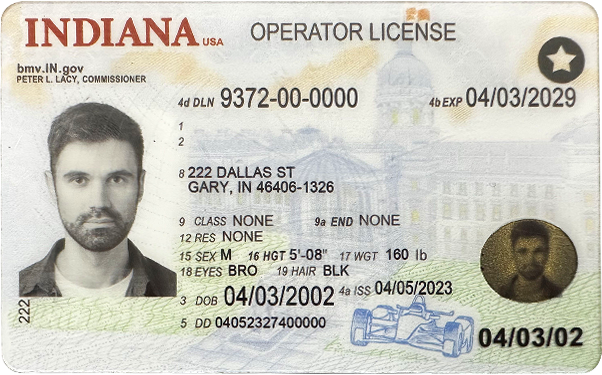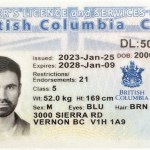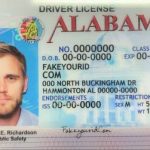Introduction
Fake driver’s licenses pose a significant threat to public safety and the integrity of the transportation system. They can be used for various illegal activities, from drunk – driving under a false identity to more serious criminal enterprises. Law enforcement agencies around the world have developed a range of strategies to combat this problem. These strategies aim to prevent the production, distribution, and use of fake driver’s licenses, as well as to apprehend those involved in these illegal activities.
Proactive Intelligence – Gathering
One of the key law – enforcement strategies is proactive intelligence – gathering. Law enforcement agencies work closely with other agencies, such as the Department of Motor Vehicles (DMV), to identify trends and patterns related to fake driver’s licenses. They monitor online platforms, both the dark web and regular social media, where fake documents may be advertised or sold. By infiltrating these online communities, either through undercover agents or by analyzing public – facing information, law enforcement can gain valuable insights into the suppliers, production methods, and customer base of fake driver’s licenses.

For example, they may notice that a particular region has a high number of requests for fake licenses with specific features or from certain ethnic groups. This information can help them focus their investigations and allocate resources more effectively. Additionally, they collaborate with international law – enforcement agencies, as the production and distribution of fake driver’s licenses often cross international borders. Sharing intelligence about trans – national criminal networks involved in document forgery is crucial for a comprehensive approach.
Technical Forensic Analysis
When a suspected fake driver’s license is seized, technical forensic analysis plays a vital role. Modern driver’s licenses are equipped with a variety of security features, such as holograms, microprinting, and embedded chips. Forensic experts use specialized equipment to examine these features. They check for inconsistencies in the quality of the hologram, such as poor resolution or incorrect color patterns. Microprinting, which is often invisible to the naked eye, can be magnified and analyzed for any signs of forgery. If the license has an embedded chip, experts can attempt to read the data stored on it and compare it with the information on the physical license.
Furthermore, forensic analysts may also study the paper or plastic material of the license. They can determine if the material is the same as that used in genuine licenses or if it has different chemical or physical properties. This type of analysis helps in building a case against the individuals involved in the forgery and also provides information that can be used to improve the security features of future driver’s licenses.
Undercover Operations
Undercover operations are another effective strategy. Law – enforcement officers pose as customers interested in purchasing fake driver’s licenses. They make contact with the suppliers, either through online platforms or in person, and gradually build a relationship. This allows them to gather more information about the operation, such as the location of the production facility, the number of people involved, and the extent of their distribution network. Once enough evidence has been collected, a raid can be carried out to shut down the operation and arrest the suspects.
However, undercover operations require careful planning and training. Officers must be able to blend in and avoid arousing suspicion. They also need to follow strict protocols to ensure their safety and the admissibility of the evidence collected. For example, they may need to document all their interactions with the suspects, including conversations and payments made, in a way that can be used in court.
Public Awareness Campaigns
Law enforcement also uses public awareness campaigns as part of their strategy. By educating the public about the dangers of fake driver’s licenses, they can encourage people to report any suspicious activities. Campaigns may include information about how to identify a fake license, the legal consequences of using or producing one, and the impact it can have on public safety. For example, they may highlight cases where fake driver’s licenses were used in hit – and – run accidents or other criminal acts.
These campaigns can be carried out through various channels, such as social media, community meetings, and public service announcements. They can also target specific groups, such as young people, who may be more likely to be involved in or targeted by fake license operations. By involving the public in the fight against fake driver’s licenses, law enforcement can increase the number of tips and leads they receive, making it easier to identify and disrupt these illegal activities.
Cooperation with Businesses
Law enforcement agencies also cooperate with businesses that regularly check driver’s licenses, such as car rental companies, security firms, and bars. These businesses are trained on how to spot fake driver’s licenses. They are provided with information about the latest security features and common signs of forgery. When a business suspects a license is fake, they are instructed on how to handle the situation, such as notifying the police immediately and preserving the license as evidence.
In return, law enforcement can offer support to these businesses in dealing with any potential legal issues that may arise from their actions. This cooperation helps to create a multi – layer defense against fake driver’s licenses. For example, a car rental company that is vigilant about checking licenses can prevent a person with a fake license from renting a vehicle, potentially avoiding a dangerous situation on the road.
Common Problems and Solutions
- Problem: Difficulty in Identifying New Types of Forgeries
As technology advances, counterfeiters are constantly coming up with new ways to create fake driver’s licenses. Law – enforcement officers may struggle to keep up with these new techniques and identify the forgeries.
Solution: Regular training sessions for law – enforcement personnel are essential. These sessions should cover the latest security features of genuine licenses and the emerging trends in forgery. Forensic laboratories can also play a role by conducting research on new types of forgeries and sharing their findings with law – enforcement agencies. - Problem: International Cooperation Challenges
Since fake driver’s license operations often span multiple countries, coordinating with international law – enforcement agencies can be difficult. There may be differences in legal systems, communication barriers, and varying levels of resources.
Solution: Establishing formal international cooperation agreements can help. These agreements can streamline the process of information sharing, joint investigations, and extradition of suspects. Additionally, international law – enforcement organizations can facilitate communication and provide training to bridge the gaps between different agencies. - Problem: Public Apathy
Despite public awareness campaigns, some members of the public may not take the issue of fake driver’s licenses seriously or may be reluctant to report suspicious activities.
Solution: Law enforcement can work on building trust with the community. This can be done through regular community – policing initiatives, where officers interact with the public in a non – confrontational way. Offering incentives, such as rewards for tips that lead to successful busts, can also encourage public participation. - Problem: Limited Resources
Law – enforcement agencies may have limited resources, both in terms of personnel and funding, to devote to fake driver’s license busts. This can slow down investigations and prevent them from being as comprehensive as they could be.
Solution: Allocating more resources to this area is crucial. This can be achieved through budget requests to government bodies, as well as through partnerships with private organizations. For example, technology companies may be willing to provide software or equipment to assist in the fight against fake driver’s licenses in exchange for positive publicity. - Problem: Admissibility of Evidence in Court
Evidence collected during investigations, such as from undercover operations or forensic analysis, may face challenges in court if not collected or handled properly.
Solution: Law – enforcement officers need to be trained on proper evidence – collection and handling procedures. They should document all steps taken during an investigation, from the initial suspicion to the seizure of evidence. Forensic analysts should also follow strict quality – control measures to ensure the reliability of their findings.
Fake ID Pricing
unit price: $109
| Order Quantity | Price Per Card |
|---|---|
| 2-3 | $89 |
| 4-9 | $69 |
| 10+ | $66 |



